
Figure 1. Caprella spp. skeleton shrimp, mounted by William C. Henley. All of his known slides used similar labels, with the specimen name in typeset.
William Cumming Henley, 1860-1919
by Brian Stevenson
last updated October, 2024
Despite the professional-style labeling and finish of his microscope slides, William Henley was an amateur slide-maker (Figures 1 to 4). He owned an ironmonger and plumbing business in Dartmouth, Devonshire. Having learned sciences associated with metalworking as a child, Henley than taught himself many other scientific and artistic skills. Henley built his first microscope himself (Figure 5). He was accomplished at drawing, painting, and photography.
After his death, William’s sister created a museum from his home, showcasing his scientific and artistic works. The building is now the Dartmouth Museum, with William’s study maintained as The Henley Room (Figures 7 and 8).

Figure 1.
Caprella spp. skeleton shrimp, mounted by William C. Henley. All of his known slides used similar labels, with the specimen name in typeset.
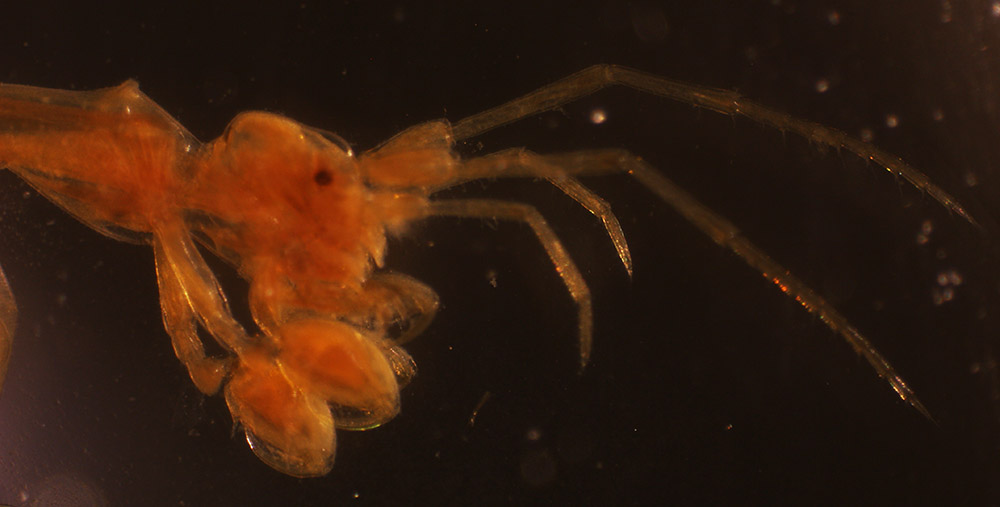
Figure 2.
Head region of a skeleton shrimp (Figure 1). Photographed with indirect lighting, a 3.5x objective lens, and C-mounted digital SLR camera on a Leitz Ortholux II microscope.
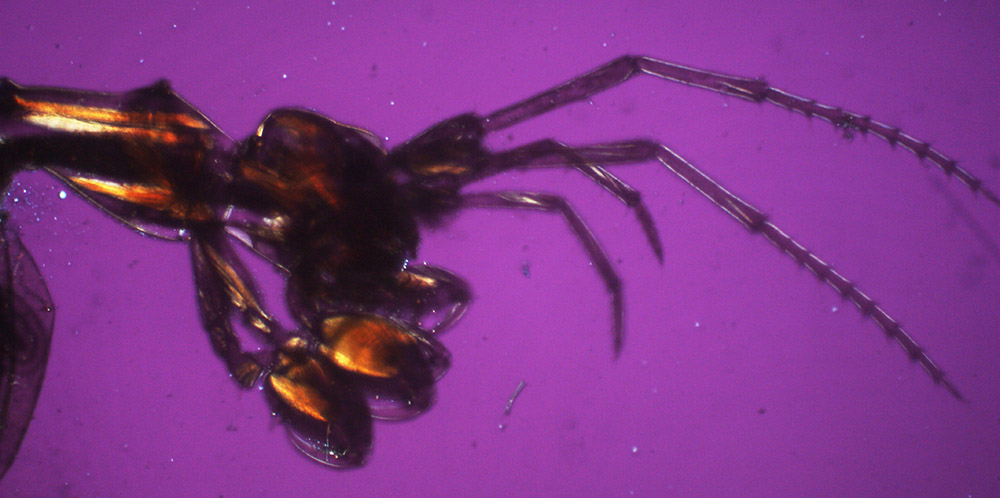
Figure 3.
Head region of a skeleton shrimp (Figure 1). Photographed with transmission lighting, crossed polarizing filters, a 3.5x objective lens, and C-mounted digital SLR camera on a Leitz Ortholux II microscope.
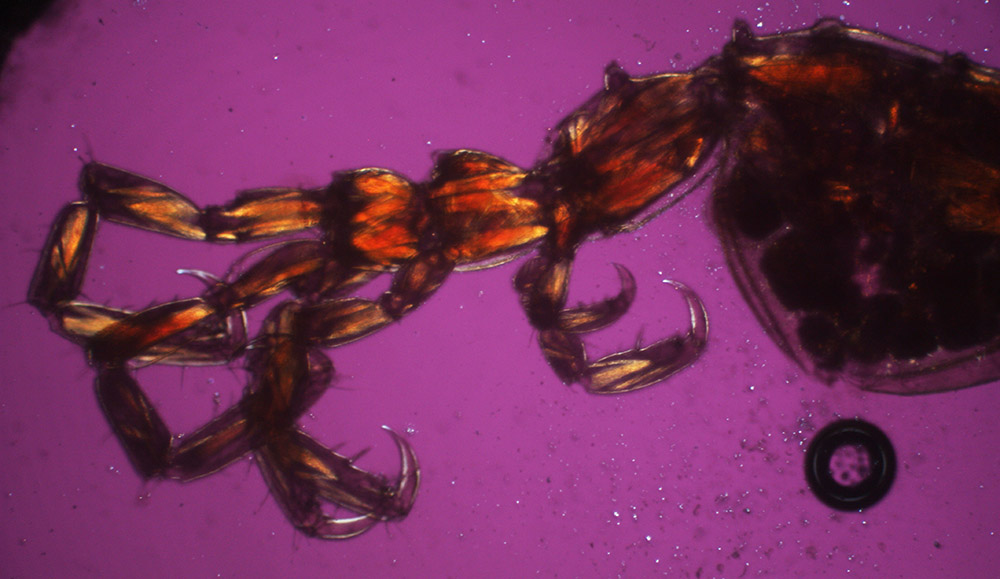
Figure 4.
Posterior of a skeleton shrimp (Figure 1). Photographed with transmission lighting, crossed polarizing filters, a 3.5x objective lens, and C-mounted digital SLR camera on a Leitz Ortholux II microscope.
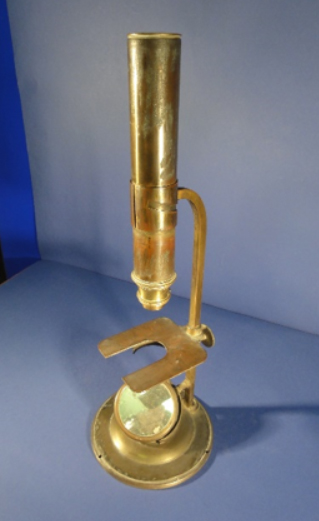
Figure 5.
A microscope that was built by William Henley when he was a young man. Adapted for nonprofit, educational purposes from https://www.dartmouthmuseum.org/the-henley-collection/
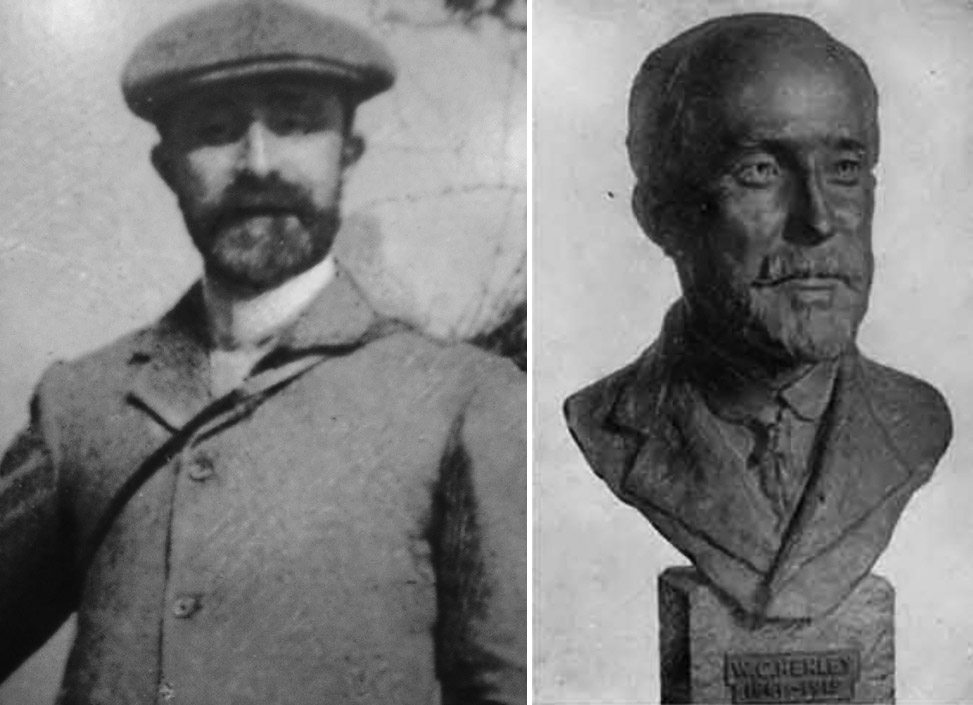
Figure 6.
Photograph and bust of William Cumming Henley. Adapted for educational, nonprofit use from https://www.ancestry.com/mediaui-viewer/collection/1030/tree/47991067/person/20075393239/
William Cumming Henley was born on January 6, 1860, in Dartmouth, Devonshire. He was the eldest to six children of William Manoah Peek Henley and Pamela Cumming Henley.
Father W.M.P. Henley operated an ironmonger / plumber / gas pipe fitter business. Our microscopist began working with his father as a child. After the father died in 1891, William C. Henley took over the business.
One of William’s sisters, Ellen Pamela Henley, published a biograph of William in 1953. A synopsis of William Henley’s life, in a history of Dartmouth by Ray Freeman, reads:
"Henley is a good example of the Victorian philosophy of self-help. His father owned the ironmonger’s business where Henley was born, over the shop, in 1860. His schooling consisted of a brief period at a 'Dame School', after which he was taught by the local Baptist Minister until he left at 12 to work in his father's shop.
His first scientific experience was working with tin and other metals, for in those days such shops did not just sell goods, but made and mended them too. After a 12 - hour day in the shop, he educated himself in a surprising range of subjects by buying secondhand books. He also taught himself to draw, paint and make architectural drawings. Always interested in the history of his town, he drew many of its old buildings which were at that time just being demolished (Figure 9). He learnt photography, and left a large collection of glass slides.
He made himself a microscope (Figure 5), which can be seen in the Museum, and with it made hundreds of microscopic slides, some mounted on glass ringed with enamel, which are of real beauty. The room which is now the Museum was once his workshop, and every wall, table and corner is packed with his collection of books, paintings, photographs and possessions of all kinds, carefully preserved by his devoted sister Ellen (Figures 7 and 8). By the time of his death in 1919 he was corresponding with some of the most learned men of his day about his many interests.”
William C. Henley died on November 6, 1919, at 59 years of age. A local newspaper reported, “At the Inquest at Dartmouth on Saturday on William Cumming Henley, who died during the passing of Dr Soper's funeral procession, Dr Sparrow said that death was due to cerebral haemorrhage, the result of a fall. Mr Davson, Coroner, expressed sympathy with Miss Henley on the loss of her brother, who was a highly cultured and well-read man.” William had not married, and left his estate to his siter, Ellen.
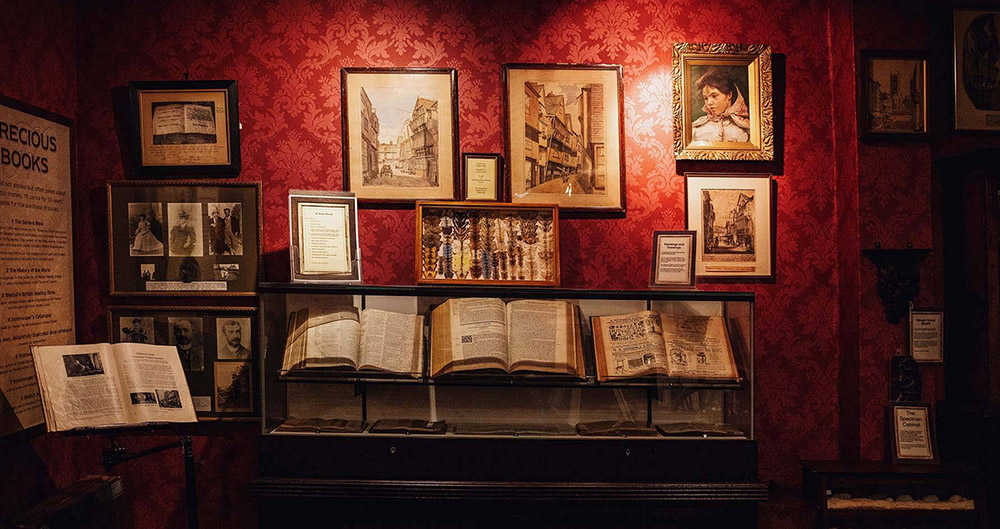
Figure 6.
“The Henley Room” of the Dartmouth Museum. Adapted for nonprofit, educational purposes from https://www.dartmouthmuseum.org/the-henley-collection/
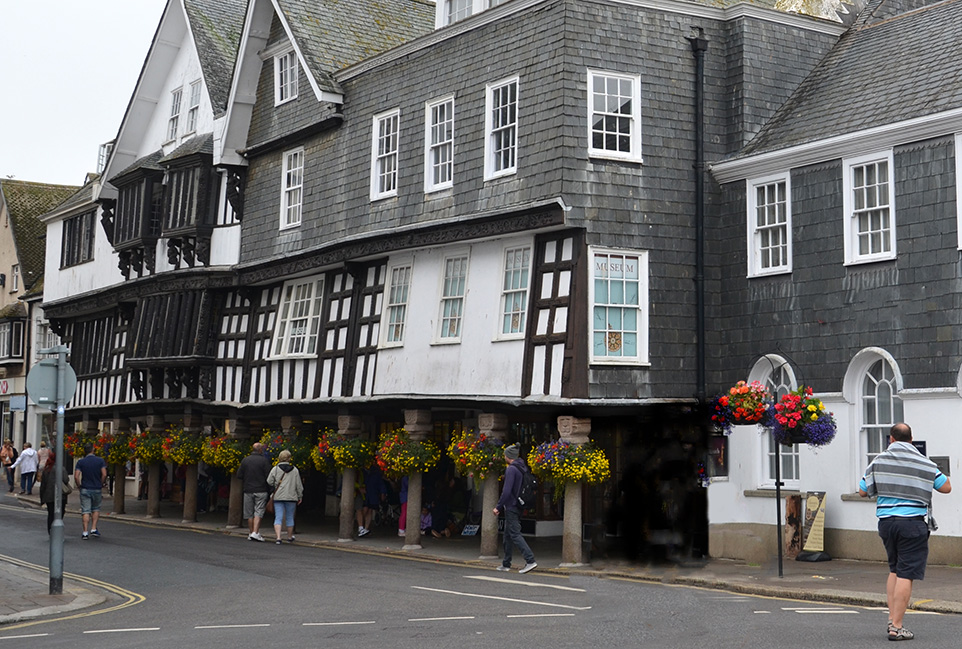
Figure 8.
The Dartmouth Museum. Adapted for nonprofit, educational purposes from https://www.visitdevon.info/things-to-do/dartmouth-museum
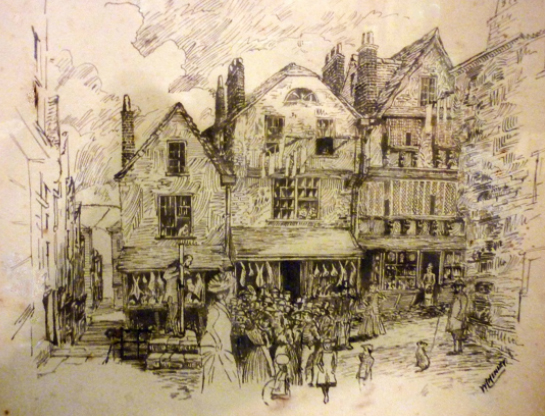
Figure 9.
A pencil sketch by William Henley, of the junction of Higher and Smith Street, Dartmouth. Adapted for nonprofit, educational purposes from https://www.dartmouthmuseum.org/the-henley-collection/
Resources
England census and other records, accessed through ancestry.com
Freeman, Ray (1983) Dartmouth, a New History of the Port and Its People, Harbour Books, Dartmouth, page 128
Henley, Ellen Pamela (1953) William Cumming Henley: His Days & Ways, R. Cranford, Dartmouth
The Henley Study (Accessed October, 2024) https://www.dartmouthmuseum.org/the-henley-collection
Probate of the will of William C. Henley (1919) “Henley William Cumming of Victoria-road Dartmouth Devonshire died 6 November 1919 Probate London 14 January to Ellen Pamela Henley spinster. Effects £1780 10s 8d”, accessed through ancestry.com
Western Times (1919) Report on the inquest of William C. Henley, Issue of Tuesday, November 11, 1919